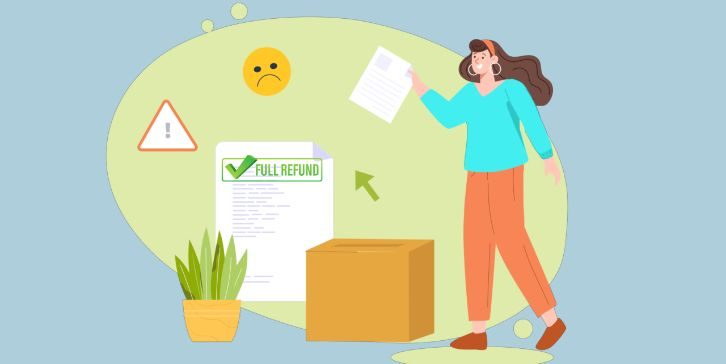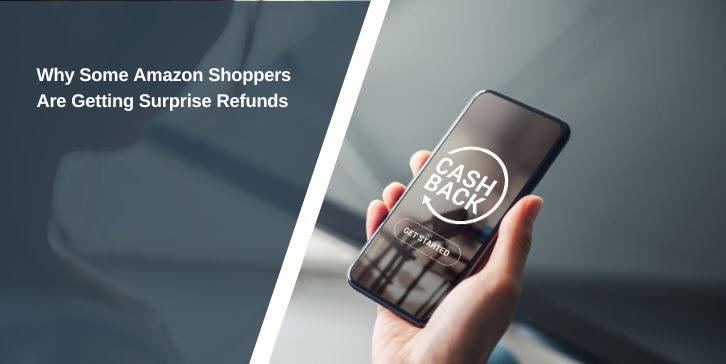More Amazon customers are seeing refunds show up without asking for them. In some cases, they get their money back and are told to keep the product. Other times, the item never arrived, but the refund came without delay. These unexpected returns are confusing many users who don’t know why it happened or what to do next.
If you’ve received a surprise refund, you’re not alone. This article explains what these refunds are, why they happen, and what you should do about them. It’s written for regular customers, online sellers, and anyone curious about Amazon’s policies and systems.
What Is a Surprise Refund on Amazon?

A surprise refund is when you receive money back for a product without asking for it. Amazon may process it automatically without needing a return or complaint. Many times, the product is never sent back, but the customer still gets the refund.
This happens more with cheaper products or when there’s a delivery issue. In many cases, customers get an email saying their refund has been approved — even before the item arrives or without needing to ship anything back.
Examples include household goods, electronics accessories, or clothing under a certain price. Items like phone cases, small kitchen tools, or basic apparel are common.
Why Does Amazon Give Refunds Without a Return?
There are several reasons why Amazon sends refunds without asking for the item to be returned. Most of them come from cost, convenience, and customer satisfaction.
Some products are too cheap to be worth shipping back. If the item cost is lower than the return shipping fee, Amazon just refunds and skips the return step.
Other times, items are marked as late, lost, or not delivered. The system may auto-approve a refund based on tracking data or delays, even if the customer didn’t open a ticket.
Amazon also gives refunds for damaged goods. If the buyer sends a clear photo or report, the refund is sometimes processed right away — especially if the damage can’t be verified by return.
In many cases, third-party sellers use Amazon’s tools to allow “keep-it” returns. These sellers want to avoid the cost and delay of returns. Amazon’s system can also trigger returnless refunds using automation and AI if it detects certain conditions.
Is It a Scam or Is It Real?
Some customers worry the refund notice is fake. That’s a valid concern, because scammers send emails that look like Amazon messages. They ask you to click a link or enter account details.
The real way to check is simple. Log into your Amazon account and look at your order history. If the refund is there, it’s real. Also, make sure the email came from @amazon.com and not a fake domain. Never click links in unexpected emails unless you’re sure they’re legit.
What Should You Do If You Get a Surprise Refund?
You don’t have to panic. Just follow a few simple steps:
- Check your order history — See if the refund is listed on your account.
- Read the email carefully — Make sure it’s from Amazon and not a scam.
- Don’t return the item — Unless Amazon specifically asks for it.
- Contact support — If something doesn’t look right or you got both item and refund.
- Keep a copy — Save the refund email or screenshot your account page for records.
How This Affects Amazon Sellers?

Sellers are on the other side of the refund. When a returnless refund is issued, they may not get the item back. That means they lose the sale and the inventory.
Some sellers report return fraud, where buyers say an item never arrived or fake a damaged return. This kind of abuse increases the cost for small businesses using Amazon’s platform.
Third-party sellers especially worry about these refunds. While Amazon controls the refund system, it’s the seller who often takes the financial hit.
Amazon’s Returnless Refund System Explained
Amazon uses an internal system to decide when to skip returns. This system checks several things before making a call.
First, it looks at the cost of the item and compares it to the shipping and processing fees. If the return cost is higher than the product value, a refund is approved right away.
Sellers can also set returnless refund rules in their dashboard. This means if certain conditions are met — like price, category, or product weight — the customer is refunded and keeps the item.
Behind this is an AI-driven system that handles large volumes of refund cases. It helps Amazon act quickly without needing long email threads or return inspections. Once a refund is issued, the customer is notified and the case is closed.
This helps keep buyers happy, avoids delays, and keeps the refund process moving fast. But it also leads to confusion when customers don’t expect it.
I hope this helped clear up the confusion. If you’ve had a surprise refund, feel free to share your story. Let us know in the comments — and don’t forget to pass this along if someone else got one too.




